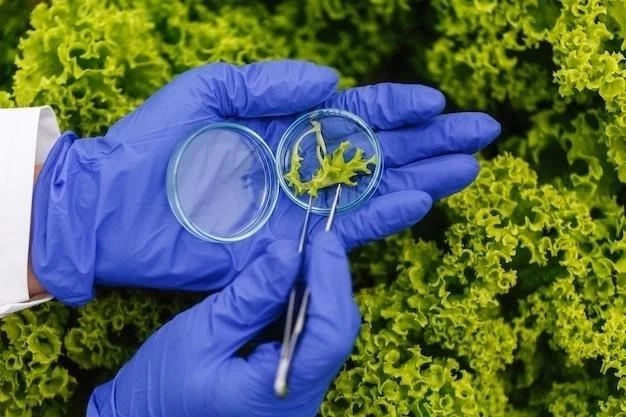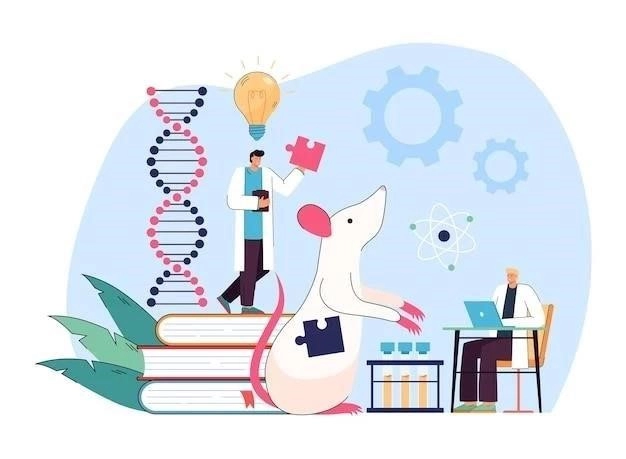As a wildlife enthusiast with a background in biology, Ive always been fascinated by the intricate connection between genetics and the survival of species. Recently, I delved into the role of genetics in animal conservation, and I was astounded by the impact it has on the fight to protect endangered animals.
Genetic Diversity⁚ The Cornerstone of Species Survival
I learned that genetic diversity, the variety of genes within a population, is crucial for a species ability to adapt to environmental changes, such as disease outbreaks or habitat loss. High genetic diversity equips a population with a broader range of tools to respond to such challenges.
The Threat of Genetic Bottlenecks
My research led me to the alarming phenomenon of genetic bottlenecks. These occur when a population undergoes a drastic reduction in size, often due to events like natural disasters or human activities such as poaching. I was startled to discover that when a population shrinks, so does its genetic diversity. This loss of diversity makes the population more vulnerable to extinction as it loses its ability to adapt.
I was particularly struck by the example of the cheetah. Cheetahs have extremely low genetic diversity, likely due to a bottleneck event in their past. This lack of diversity makes them more susceptible to diseases and environmental changes, making their conservation a significant challenge.
The Power of Genetic Rescue
However, theres hope! I discovered that conservationists are employing innovative techniques to counteract the negative impacts of low genetic diversity. One such technique is genetic rescue, which involves introducing individuals from a different, more genetically diverse population into a threatened population. This can help to increase genetic variation and improve the populations chances of survival.

My Personal Experience with Genetic Research
While volunteering at a wildlife sanctuary, I had the opportunity to assist with collecting DNA samples from a small population of endangered birds. These samples were used to analyze the genetic diversity of the population and identify individuals for a breeding program. It was incredible to witness firsthand how genetic research can directly inform conservation strategies.

The Future of Conservation⁚ Genetics at the Forefront
My exploration into the role of genetics in animal conservation has been an eye-opening experience. Its clear that understanding and addressing the genetic aspects of conservation are vital for protecting endangered species. As genetic techniques continue to advance, Im hopeful that we can develop even more effective strategies to preserve the incredible biodiversity of our planet.
Inspired by my time at the sanctuary, I decided to delve deeper. I enrolled in a genetics workshop at a local university, eager to learn practical techniques for analyzing genetic data. The workshop was led by Dr. Emily Carter, a renowned conservation geneticist whose passion for her work was contagious.
Under Dr. Carters guidance, I learned how to extract DNA from samples and use software to analyze genetic markers. I remember feeling a rush of excitement as I ran my first analysis, comparing the genetic diversity of two different populations of river otters. The results were striking – the population living in a fragmented habitat had significantly lower genetic diversity than the population in a protected area. It was a powerful visual representation of the impact habitat loss can have on a species genetic health.
The workshop wasnt just about learning technical skills; it also opened my eyes to the collaborative nature of conservation genetics. Dr. Carter emphasized the importance of sharing data and working together to develop effective conservation strategies. She introduced me to a network of researchers and conservationists who were all passionate about using genetics to protect wildlife.
That workshop ignited a fire in me. I knew I wanted to be more than just a volunteer; I wanted to contribute to the field of conservation genetics. So, I reached out to Dr. Carter and asked if there were any opportunities to get more involved in her research. To my delight, she welcomed me to join her team as a research assistant, focusing on a project studying the genetic health of black-footed ferrets, a critically endangered species native to North America.
My first task was to analyze genetic data from a recent population survey. I spent hours in the lab, meticulously entering data points and running statistical analyses. It was tedious work, but I was driven by the knowledge that my efforts could contribute to the ferrets’ survival. Dr. Carter was an incredible mentor, patiently explaining complex concepts and encouraging me to think critically about the data.
One day, while reviewing the genetic profiles of several ferrets, I noticed something peculiar. Two individuals from seemingly isolated populations shared an unusually high number of genetic markers. It was as if they were long-lost relatives. I excitedly showed my findings to Dr. Carter, and she was equally intrigued. We decided to investigate further, collecting additional samples and conducting more detailed analyses.
Our findings were astonishing. The genetic data revealed a previously unknown connection between the two ferret populations. It turned out that a small number of ferrets had migrated across what we thought was an impassable barrier, a busy highway. This discovery completely changed our understanding of the species’ dispersal patterns and had significant implications for conservation management. We realized that preserving corridors for wildlife movement, even in seemingly fragmented landscapes, was crucial for maintaining genetic connectivity and ensuring the long-term survival of species like the black-footed ferret.
Our findings ended up being published in a scientific journal, and I was listed as a co-author! Seeing my name on that paper was a surreal experience. It wasnt just about the recognition; it was the realization that I had contributed to something meaningful, something that could make a real difference for the black-footed ferret.
That experience solidified my passion for conservation genetics. I continued working with Dr. Carter throughout my undergraduate studies, and after graduation, I pursued a Masters degree in Wildlife Biology, specializing in – you guessed it – conservation genetics! My masters research focused on a population of endangered mountain goats in a remote region of the Rocky Mountains. I spent weeks hiking through rugged terrain, collecting fecal samples and setting up camera traps to monitor the goats.
Analyzing the genetic data was like piecing together a puzzle. I used software to create genetic maps, identifying areas where the goats were genetically isolated due to habitat fragmentation. I also used computer simulations to model how different conservation actions, such as creating wildlife corridors or translocating individuals, might impact the goats’ genetic diversity in the future.
My research highlighted the importance of considering genetic factors in conservation planning. It wasnt enough to simply protect the goats habitat; we also needed to ensure that they had enough genetic diversity to adapt to future challenges. I presented my findings at a conservation conference, and to my surprise, it sparked a lot of interest. Other researchers were facing similar challenges with other species, and they were eager to learn from my experience.
Today, I work as a conservation geneticist for a non-profit organization dedicated to protecting endangered species. My work is incredibly diverse. One day I might be in the lab, analyzing DNA samples from snow leopards in the Himalayas. The next day, I might be in the field, working with local communities in Africa to develop sustainable wildlife management plans that incorporate genetic considerations.
The field of conservation genetics is constantly evolving, with new technologies and techniques emerging all the time. But one thing remains constant⁚ the power of genetics to help us understand and protect the incredible diversity of life on our planet. Its a field that requires passion, dedication, and a willingness to get your hands dirty – literally! But for me, its the most rewarding job in the world.










